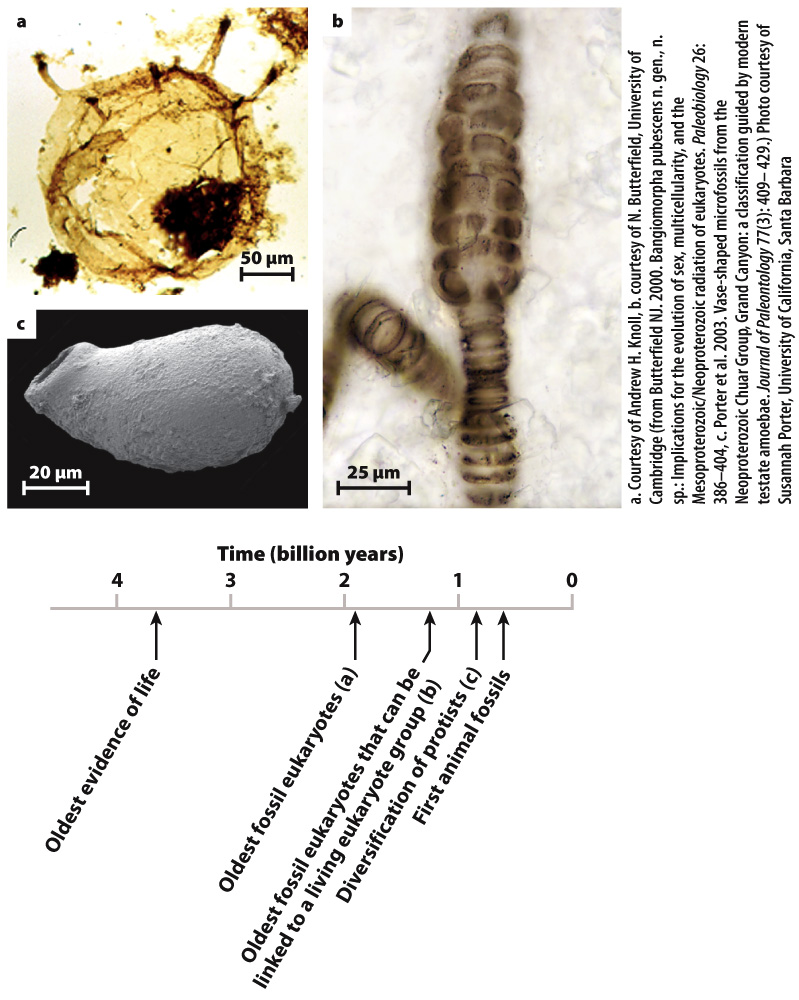Fossils show that eukaryotes existed at least 1800 million years ago.
Sedimentary rocks deposited in coastal marine environments 1800–1400 million years ago contain microscopic fossils (called microfossils for short) up to about 300 μm in diameter. Many of these have complicated wall structures that identify them as eukaryotic. Interlocking plates, long and branching arms, and complex internal layering have been imaged by both scanning and transmission electron microscopes (Fig. 27.22a). Comparison with living organisms suggests that such fossils could only be formed by organisms with a cytoskeleton and endomembrane system, the hallmarks of eukaryotic biology.

FIG. 27.22 Eukaryotic fossils in Precambrian sedimentary rocks. (a) Simple protist in 1500-million-year-old rocks from Australia. (b) Simple multicellular red algae in 1100–1200-million-year-old rocks from Canada. (c) Amoebozoan test in 750-million-year-old rocks from the Grand Canyon, Arizona.
At present, it appears that the eukaryotic domain first appeared no later than 1800 million years ago and possibly earlier, although the record is difficult to trace in older rocks. None of these earliest eukaryotic microfossils can be placed with confidence into one of the living superkingdoms. Conceivably, at least some of the oldest protistan microfossils could predate the last common ancestor of living eukaryotes.
In sedimentary rocks thought to be 1100–1200 million years old, we find the oldest fossils that can be linked clearly to a living group of eukaryotes (Fig. 27.22b). These fossils preserve features found today only in the red algae. We can therefore conclude that by 1200 million years ago Archaeplastida had already diverged from other eukaryotic superkingdoms, photosynthesis had become established in eukaryotes, and simple multicellularity had already evolved within the domain.
Much more eukaryotic diversity is recorded in rocks 800–700 million years old, including green algae and the remains of test-forming amoebozoans (Fig. 27.22c). Molecular fossils further indicate the presence of ciliates and dinoflagellates in the emerging eukaryotic world and show that algae were expanding to become major photosynthesizers in the oceans. How can we explain this diversification? One hypothesis is that 800–700 million years ago, protists first evolved (or expanded) the ability to eat other protists rather than preying only on Bacteria and Archaea. This ability initiated an evolutionary arms race that favored divergent means of preying on other organisms and avoiding predation. Both fossils and molecular clocks support this ecological hypothesis for eukaryotic diversification, perhaps facilitated by a small increase in the oxygen content of seawater.
